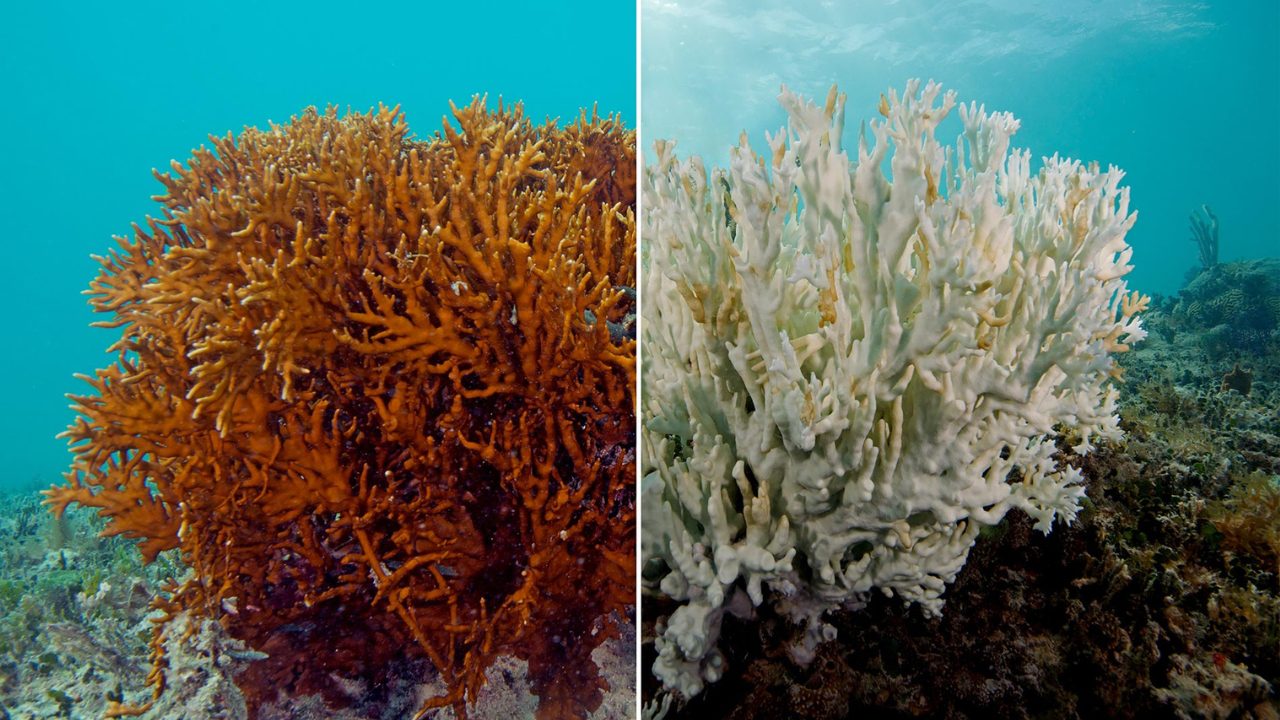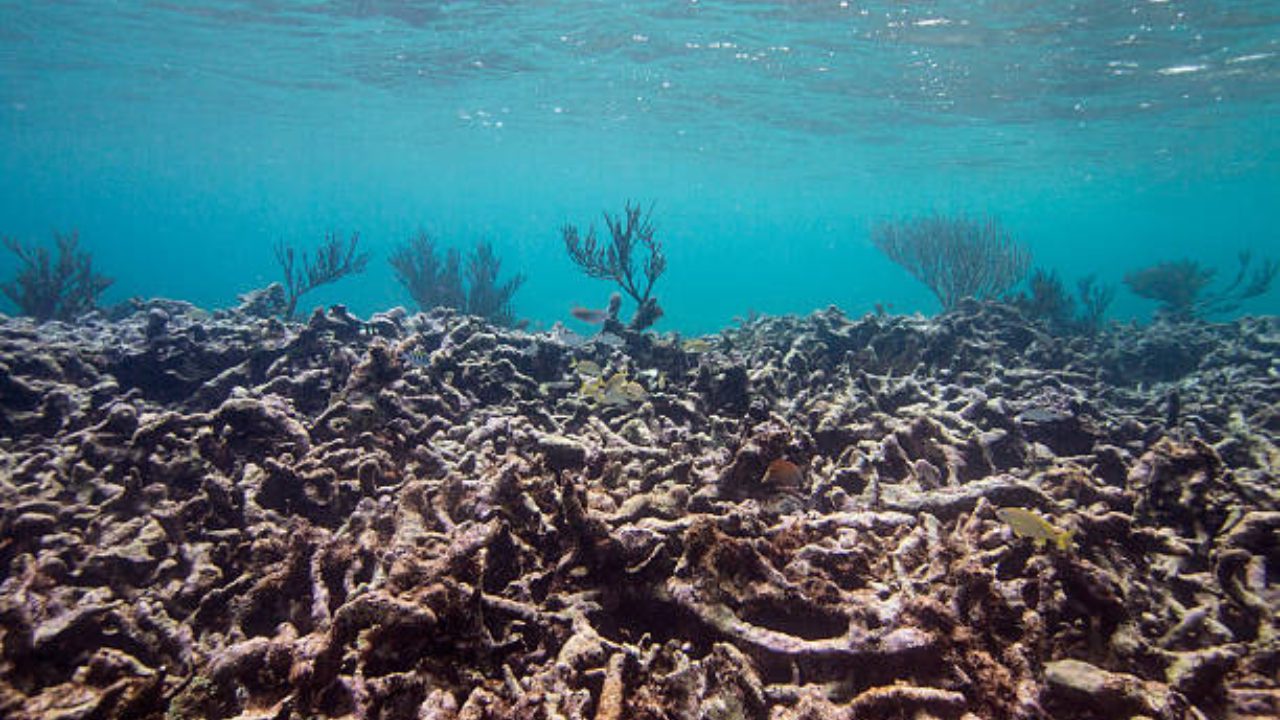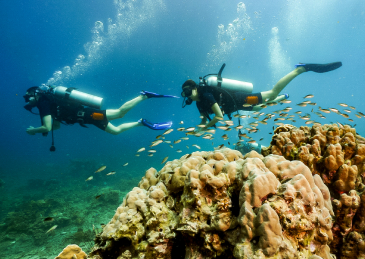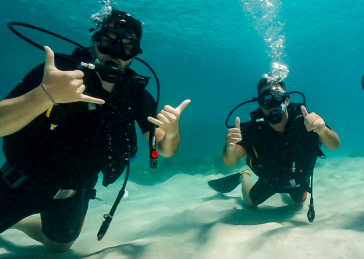Modified 10th June 2025
What Is Coral Bleaching And Why Does It Happen?
For divers exploring the underwater world, understanding what coral bleaching is and why it happens becomes deeply personal when witnessing once-colorful reefs transformed into ghostly white landscapes. This phenomenon represents one of the most serious threats facing marine ecosystems today, affecting not only the beauty that draws divers to destinations like Koh Tao’s waters, but also the very foundation of oceanic biodiversity.
Coral bleaching occurs when environmental stressors force corals to expel zooxanthellae, the symbiotic algae that provide up to 90% of their energy through photosynthesis. This process leaves corals vulnerable, potentially leading to widespread die-offs that can take decades to recover from, if recovery occurs at all.

Understanding the Coral Bleaching Process
The Science Behind Coral-Algae Relationships
Corals and zooxanthellae maintain one of nature’s most crucial symbiotic relationships. These microscopic algae live within coral tissues, using sunlight to produce organic compounds through photosynthesis. In return, corals provide protection and nutrients for the algae.
Corals host millions of zooxanthellae algae, creating bright colors and providing 90% of energy needs through photosynthesis.
Temperature increases, pollution, or other stressors disrupt the delicate balance between coral and algae.
Stressed corals expel zooxanthellae, revealing white calcium carbonate skeleton underneath.
If conditions improve quickly, corals can reacquire algae. Otherwise, they weaken and potentially die.
This relationship explains why coral reefs are among the most productive ecosystems on Earth, supporting incredible biodiversity in nutrient-poor tropical waters. When vida marina depends on these relationships, any disruption can cascade through entire ecosystems.
Primary Causes of Coral Bleaching
Ocean temperature increases of just 1-2°C above normal for extended periods trigger mass bleaching events. Climate change has made marine heatwaves more frequent and severe.
Intense sunlight, especially during low tides or clear weather, can overwhelm algae’s photosynthetic capacity, producing harmful oxygen radicals.
Agricultural runoff, sewage, and industrial chemicals increase coral stress levels, making them more susceptible to bleaching triggers.
Increased CO2 absorption makes oceans more acidic, weakening coral skeletons and reducing their resilience to other stressors.
Climate Change: The Overwhelming Factor
While multiple factors contribute to coral bleaching, climate change represents the most significant threat. The Great Barrier Reef experienced unprecedented back-to-back bleaching events in 2016 and 2017, affecting over 90% of the reef system. Such rapid successive bleaching prevents recovery and can lead to permanent ecosystem changes.
Corals begin showing stress at temperatures just 1°C above their maximum monthly average. At 2°C above normal, widespread bleaching occurs. Understanding these thresholds helps explain why timing diving trips during optimal conditions becomes increasingly important for experiencing healthy reef ecosystems.

Consequences of Coral Bleaching
Immediate and Long-term Effects
Biodiversity Loss
Coral reefs support approximately 25% of all marine species, making bleaching events catastrophic for ocean biodiversity. Fish populations decline dramatically when reef structure deteriorates, affecting everything from local conservation efforts to commercial fisheries.
Economic and Social Impacts
Coastal communities worldwide depend on coral reefs for:
- Tourism revenue from diving and snorkeling activities
- Fisheries providing protein and income for millions
- Coastal protection from storm surges and erosion
- Cultural and spiritual significance for indigenous peoples
Prevention and Conservation Strategies
Reducing greenhouse gas emissions through renewable energy adoption and carbon footprint reduction remains the most critical intervention.
Minimizing agricultural runoff, improving sewage treatment, and reducing plastic pollution helps build coral resilience.
Responsible diving practices, reef-safe sunscreens, and supporting conservation-focused operators protect fragile ecosystems.
Supporting coral gardening, assisted evolution, and monitoring programs develops new conservation techniques.
Individual Actions That Make a Difference
Every person can contribute to coral conservation through:
- Choosing sustainable transportation and energy options
- Using reef-safe sunscreens containing zinc oxide or titanium dioxide
- Supporting businesses committed to environmental responsibility
- Participating in local beach cleanups and conservation programs
- Educating others about coral bleaching causes and prevention
- Advocating for policies addressing climate change and ocean protection
For divers specifically, practicing proper buoyancy control, avoiding contact with corals, and choosing operators committed to conservación marina helps protect the reefs we love to explore.
Recovery and Adaptation Potential
While coral bleaching presents serious challenges, some coral species demonstrate remarkable resilience. Research has identified heat-tolerant coral varieties and shown that some populations can develop increased temperature tolerance over time. However, the rapid pace of climate change often outpaces natural adaptation rates.
Innovative conservation approaches include:
- Coral Gardening: Growing resilient corals in nurseries before transplanting to degraded reefs
- Assisted Evolution: Helping corals develop heat tolerance through selective breeding
- Probiotics: Introducing beneficial bacteria to boost coral health and resilience
- Shade Structures: Physical interventions to reduce light and temperature stress
Success stories from around the world demonstrate that with proper intervention and improved conditions, reefs can recover. However, prevention remains far more effective than restoration, making urgent climate action essential.
Witness the beauty of thriving coral ecosystems while supporting marine conservation in Koh Tao.
At La Bombona Diving, we’re committed to sustainable diving practices and coral conservation education. Our experienced instructors teach proper reef interaction techniques while sharing knowledge about marine ecosystems and conservation efforts.
- Eco-friendly diving practices and reef protection education
- Small group sizes to minimize environmental impact
- Support for local marine conservation initiatives
- Expert guides knowledgeable about coral health and biodiversity
- Reef-safe diving protocols and equipment maintenance
- Educational opportunities about coral bleaching prevention
Experience coral reefs responsibly while learning about their conservation
Join Our Conservation-Focused Open Water CourseOpen Water Certification: ฿11,000 | 4 ocean dives over 4 days | Marine conservation education included
Preguntas frecuentes
Bucea con LBD: tu puerta a la exploración submarina
Tanto si eres un principiante curioso como un profesional experimentado, nuestra escuela es tu portal a las maravillas del submarinismo. Únete a nosotros en el mundo bajo las olas.
¿LISTO PARA EMPEZAR?
Consulta nuestros cursos de buceo en Koh Tao



